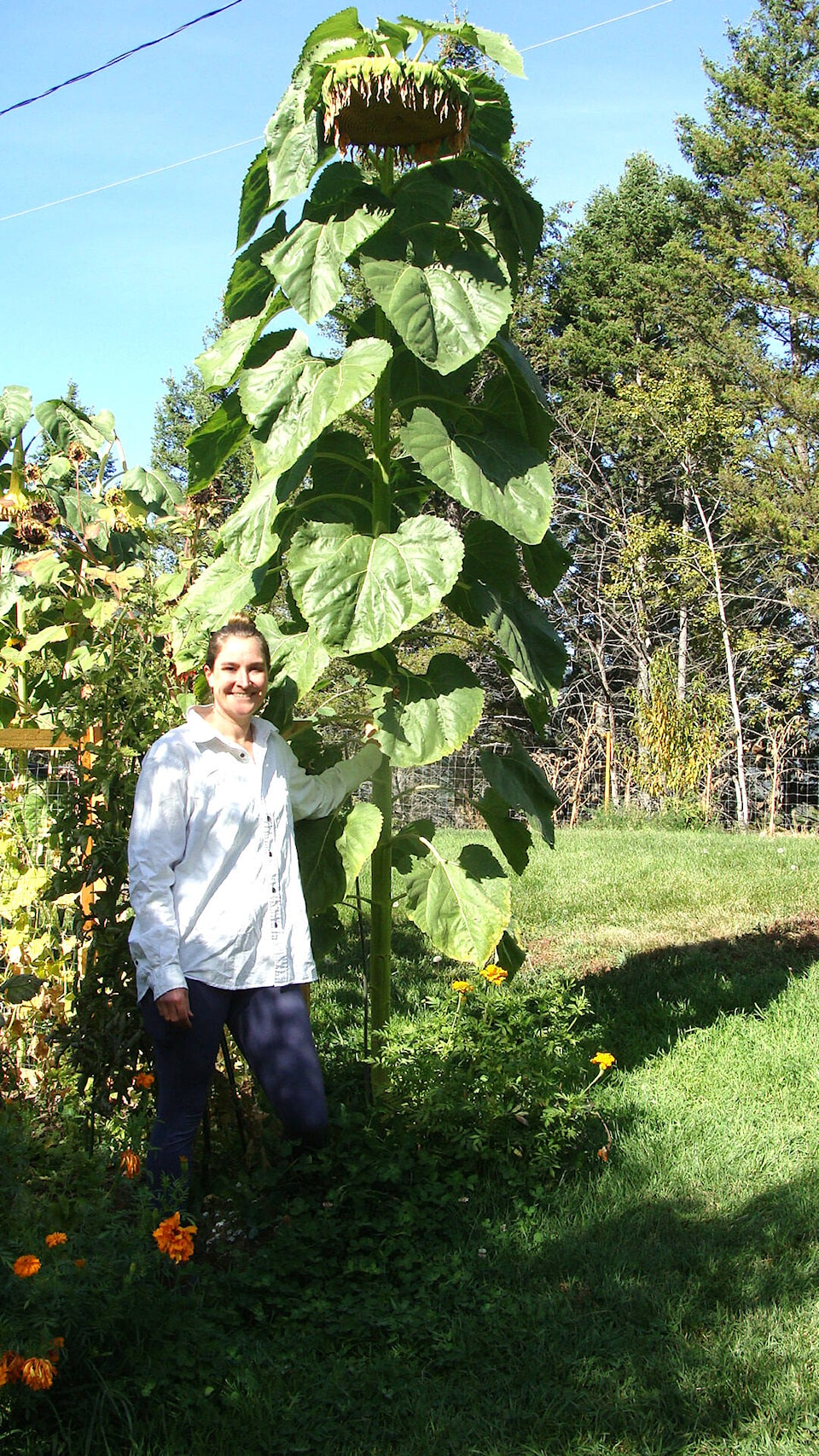I was very impressed at what Jodie Capling and Ben Smith had done with their garden in their first year of production in 2021 but was not prepared with the size of their sunflowers when I visited a few weeks ago.
As shown in the picture, the plant on the edge of the garden was over 12 feet tall with a head 20-plus inches across supported on a two-inch stem. While their home in Pablo Creek has a relatively productive micro-climate with good summer exposure to the sun they also developed a productive soil by tilling up an established pasture by using a small excavator and adding compost and chicken manure from their own flock.
Their two garden plots are fenced approximately 40 feet square with drip irrigation supporting a wide variety of productive vegetables. They would be the first to admit the sunflowers were a bit of a surprise for them as many were volunteers from last year, and they had not set out to grow these giants.
After a little research, it turns out sunflowers have the capacity for some impressive plants, with the world record from Germany in 2014, which attained a height of 31 feet and the largest head produced in B.C. at 32 inches across. Some of the pictures of the giants showed they were supported with metal scaffolding which, in my opinion, is not comparable to a plant standing on its own like the one described above.
While the annual production from an annual like a sunflower is impressive, it probably does not compare to the biomass accumulated by some forest ecosystems.
Following the abundant Douglas Fir cone crop on our property hundreds of small fir seedlings resulted. As an experiment, I tried to transplant a few in a protected area that I could monitor. In contrast to the rapid growth of the sunflower, the fir seedlings grew very slowly with a tiny stem with only a few needles and a thin two-inch taproot. According to the internet, it may take three to four years for the seedling to reach 25 centimetres and ten years to get to a Christmas tree size plant.
My interpretation is a slow but steady approach along with a good root-to-shoot ratio is one of the keys for survival. Just enough needles to produce a moderate root system with the goal of root hairs joining with fungal mycelium which will assist in providing water and minerals in exchange for a little carbon for fungal growth.
In the central Interior, having a snow cover would help to survive the severe cold winter temperatures, so it is better to not get tall too soon. As described in previous articles, once a young tree connects to the underground fungal network, it gets assistance from larger trees, especially the mother tree.
If the new tree has extra resources, it then shares these with neighbours that are deficient at the time. This integrated system is what allows some of the forest ecosystems to become one of the most productive plant communities in the world.
Read More: FOREST INK: Making forest policy changes can be painfully slow
Do you have something to add to this story, or something else we should report on? Email: rebecca.dyok@quesnelobserver.com
Like us on Facebook and follow us on Twitter.
